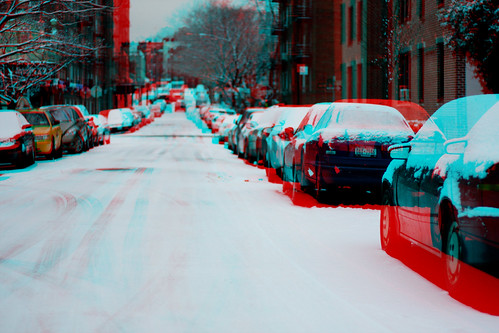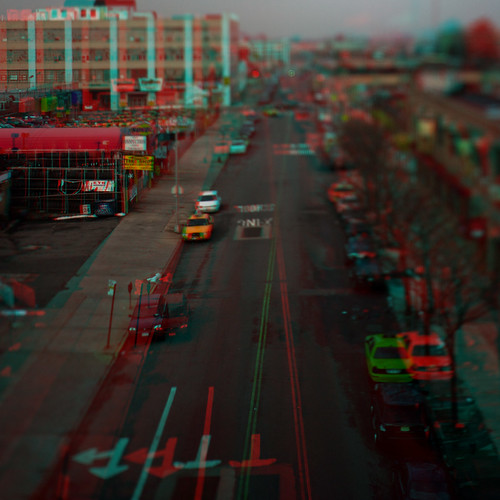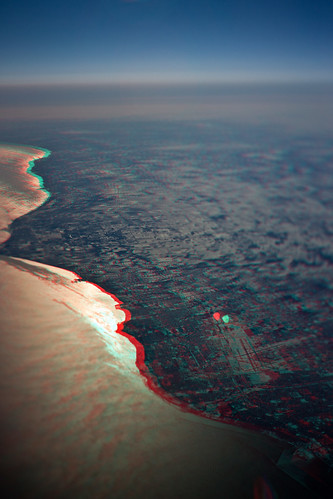No trip to anywhere I go would be complete without some needless, surplus and redundant display of flagrant geekery. Thanks to fksr, I've been bitten by the 3D anaglyph photo bug.
In an effort to try to learn a bit more about the process, I went ahead and snapped left-right image pairs in different scenarios to try to learn what does and doesn't work in stereo.
The image above has a pretty strong separation between left and right, with a definite foreground, midground and background. I've chosen to register the images in the midground, and there the 3D effect is subtle and it seems to work reasonably well. However, in the extreme foreground, the separation is pretty huge and this causes the the car in the front right to oscillate unpleasantly.
fksr also points out that stereo elements right at the vertical edges of the frame are partially cut off in both eyes, which probably doesn't help in terms of resolving the picture as stereo.
This next image displays the same issues as the one here - the separation distance is pretty huge, so the foreground and background sections seem to also oscillate.
This image, taken from the plane window flying back to San Francisco, doesn't have the same issues as the first two. Here, there seems to be just a foreground and a background element, and a relatively small amount of shift. The 3D effect is less dramatic, but, to me at least, more effective.
As with the first flyover image, the 3D effect here is a less dramatic but more effective. Again, I'd argue that due to the simpler composition - background, foreground - it's less busy and the effect is more convincing. Plus, the more subtle separation between left and right helps.
So what have I learned? Well, so far it seems that for an effective image, separation distance is key, try to keep the image not too busy (i.e. having only a few elements that you want to 'pop' as 3D) and you must attempt to prevent your stereo components from intersecting the left and right parts of the image frame. Getting an effective 3D image, it seems, isn't just snapping left and right pairs - composition in the z-direction (i.e. ordering stuff in terms of depth) is also critical.




No comments:
Post a Comment